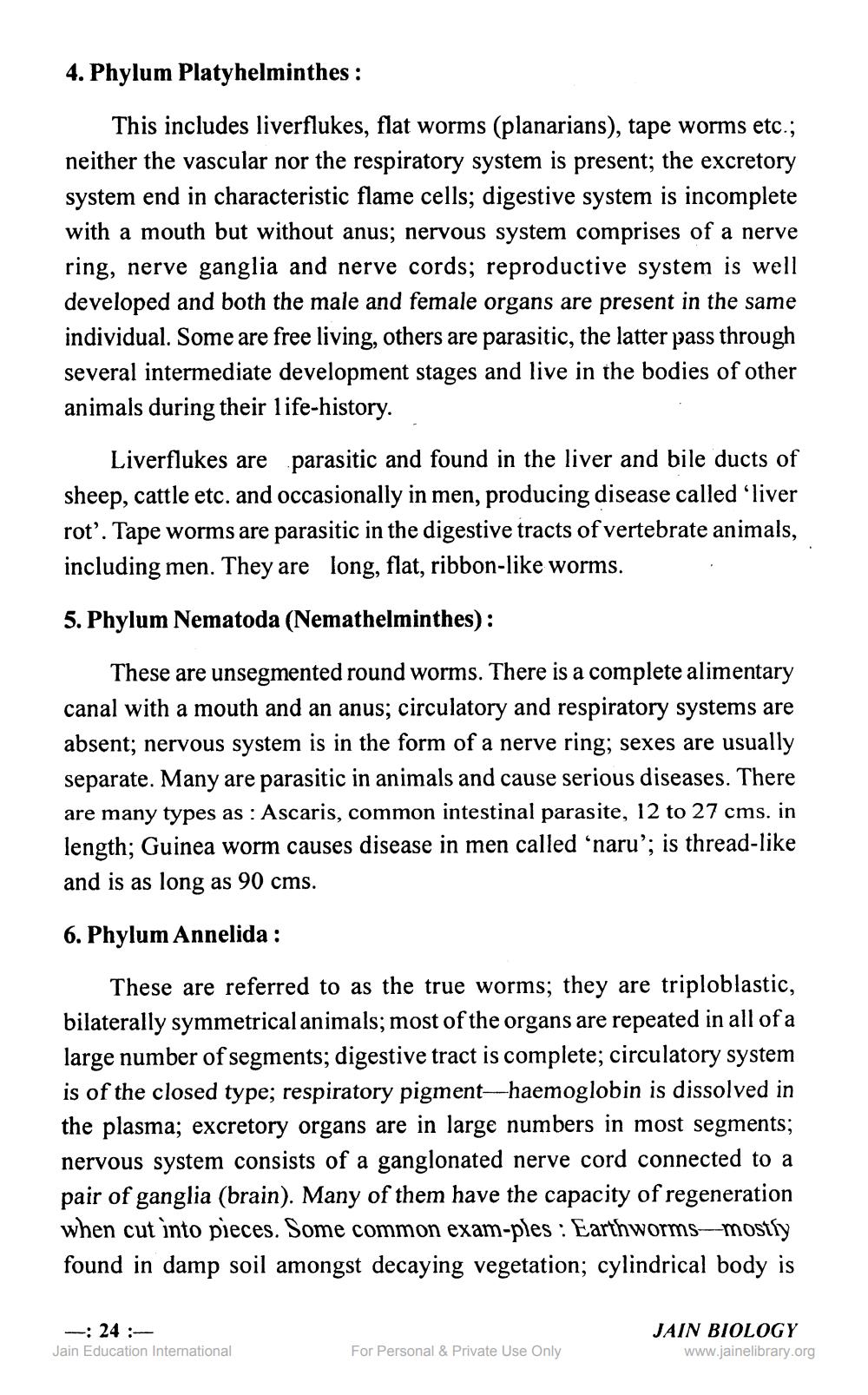________________
4. Phylum Platyhelminthes:
This includes liverflukes, flat worms (planarians), tape worms etc.; neither the vascular nor the respiratory system is present; the excretory system end in characteristic flame cells; digestive system is incomplete with a mouth but without anus; nervous system comprises of a nerve ring, nerve ganglia and nerve cords; reproductive system is well developed and both the male and female organs are present in the same individual. Some are free living, others are parasitic, the latter pass through several intermediate development stages and live in the bodies of other animals during their life-history.
Liverflukes are parasitic and found in the liver and bile ducts of sheep, cattle etc. and occasionally in men, producing disease called 'liver rot'. Tape worms are parasitic in the digestive tracts of vertebrate animals, including men. They are long, flat, ribbon-like worms.
5. Phylum Nematoda (Nemathelminthes):
These are unsegmented round worms. There is a complete alimentary canal with a mouth and an anus; circulatory and respiratory systems are absent; nervous system is in the form of a nerve ring; sexes are usually separate. Many are parasitic in animals and cause serious diseases. There are many types as: Ascaris, common intestinal parasite, 12 to 27 cms. in length; Guinea worm causes disease in men called 'naru'; is thread-like and is as long as 90 cms.
6. Phylum Annelida:
These are referred to as the true worms; they are triploblastic, bilaterally symmetrical animals; most of the organs are repeated in all of a large number of segments; digestive tract is complete; circulatory system is of the closed type; respiratory pigment-haemoglobin is dissolved in the plasma; excretory organs are in large numbers in most segments; nervous system consists of a ganglonated nerve cord connected to a pair of ganglia (brain). Many of them have the capacity of regeneration when cut into pieces. Some common exam-ples: Earthworms-mostly found in damp soil amongst decaying vegetation; cylindrical body is
-: 24:
Jain Education International
For Personal & Private Use Only
JAIN BIOLOGY www.jainelibrary.org




